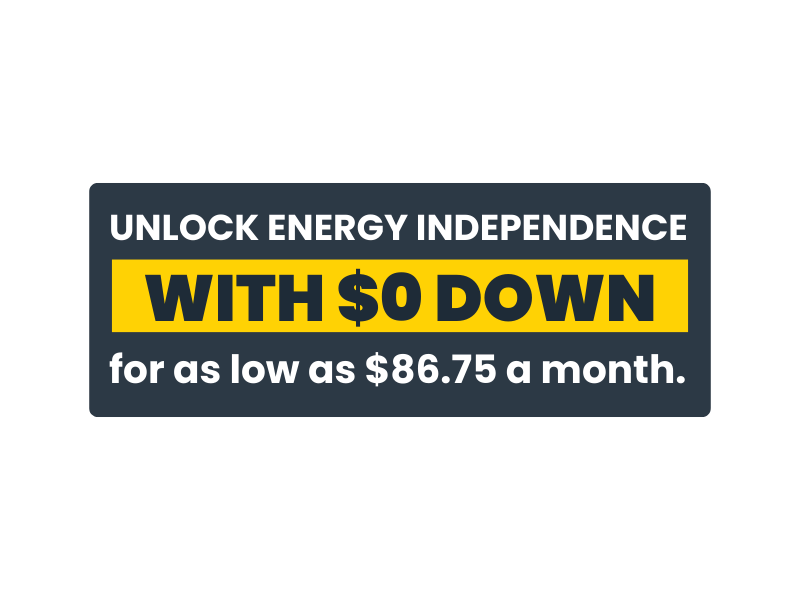Could you power your computer with solar panels?
A few blogs ago, we discussed whether it would make sense to build solar systems that had just enough panels to power refrigerators or air conditioners.
You may recall that the answer was yes.
But refrigerators and AC units aren’t the only appliances that are constantly running in the house. So is the one that you’re probably using to read this article right now: your computer.
So have you ever wondered how much solar it would take to power your computer? Well, we’re here with an answer!
How to Calculate Your Computer's Wattage
To understand how much power your computer uses, you'll need to look at the power requirements of its parts, like the CPU, GPU, hard drives, and any other accessories. You can find this information on the power supply unit for desktops or the charger for laptops. For a more accurate measurement, you can use a device like a Kill-A-Watt meter, which tells you how much electricity your computer uses when it's on and when it's sleeping.
Desktops consume between 200 to 500 watts on average. Laptops typically range from 30 to 70 watts. We’ll use 100 for simplicity’s sake.
Calculate daily energy consumption: Multiply the appliance's wattage by the number of hours it is used per day to find the daily energy consumption in watt-hours (Wh). For example, if an appliance uses 100 watts and is operated for 8 hours each day, the daily consumption would be
- 100 watts×8 hours=800 Wh
Calculate annual energy consumption: Multiply the daily energy consumption by the number of days the computer is used in a year. If you use it every day, you would multiply by 365 days.
- 800 Wh/day×365 days=292,000 Wh/year
Convert to Kilowatt-hours (kWh): Since energy consumption is typically measured in kilowatt-hours on utility bills, convert the annual consumption from watt-hours to kilowatt-hours by dividing by 1,000.
- 292,000 Wh/year÷1,000=292 kWh/year
Your computer’s annual energy usage is 292 kWh/year.

The Difference Between PC and Laptop Energy Consumption
The power consumption between desktop PCs and laptops is markedly different, primarily due to their design objectives and usage. Desktops, particularly those designed for high-performance tasks like gaming, can consume between 200 to 500 watts due to their robust components and cooling requirements. Laptops, designed for portability and efficiency, generally use less power, typically ranging from 30 to 70 watts, as a result of their integrated, battery-optimized components.
This distinction is key in understanding and managing your household's energy consumption, as it directly affects your electricity usage and costs.
What if You Wanted to Power Your Laptop with Solar Panels?
Many solar owners purchase enough panels to cover only certain appliances, namely, refrigerators, AC units, and furnaces—the real energy hogs. We’ve determined that about six panels could cover these appliances in the past.
But what if you wanted just enough panels to cover your computer? How many would it take?
There’s one more calculation we’ll need here.
Now that we know much annual energy usage the computer uses (292 kw/h), we’d need to determine the wattage of the solar panels we’re using and how much average sunlight you get per day.
Let’s say you live in Ohio, where you get a little over 4 hours of average sunlight per day. Using the average 350 Watt residential solar panel, we can use the following formula to determine how many panels you need:
Calculate daily energy product of one panel: Multiply the panel's wattage by the average number of peak sunlight hours per day.
Panel Wattage×Peak Sunlight Hours per Day= Daily energy production
350* 4= 1,400 Wh
Calculate the annual energy production of one panel: Multiply the daily energy production by the number of days in a year (365)
511,00 kWh/year
Determine the number of panels needed: Divide the total annual energy requirement by the annual energy production of one panel
292,000 kWh/year/ 511,000 kWh/year/panel= 57%
57%? Is that possible? Can we split a solar panel in half?
Sorry, we can’t!
What this means is that a single 350W solar panel would be more than enough to power your computer for a year.

So would it make sense to do it?
We’re always honest with our customers and in this case the answer is…no!
Solar installations require permits, labor, inverters, and electrical integration into your home’s system. Incurring these costs wouldn’t be cost-effective on a per-watt basis.
You’d have a major energy production vs consumption disparity issue. A single panel would generate a fraction of the energy needed to cover any other utilities given the cost to install it.
Scalability would be an issue too. You’d be better off incurring more cost up front for a larger system.
It’s impractical to do a solar installation this small for a variety of reasons. Solar installations are most cost-effective when they're designed to meet broader energy needs. Installations that cover whole homes or that cover high-consumption appliances are more efficient and sustainable. This approach ensures that all your energy needs are met, from lighting and heating to powering all your devices, and maximizing the benefits of solar energy.
Considering the amount of financial incentives available to home-owners, like net metering, you’d be far better off going for a partial install like six panels to cover one of your appliances (which would also cover your computer and other electronics) than going for just one.
Covering Your Energy Needs With Solar
When considering a move to solar power, it's important to consider all of your energy needs. While you could technically use a single solar panel for your laptop, it's more practical to look at solar power as a way to reduce your overall energy bills. A system that's designed for your entire home is more efficient and can save you more money in the long run.
Get it right with YellowLite
While we’re mostly entertaining the idea of a single solar panel install for fun, it’s interesting to think about.
Knowing how much power your appliances use is the first step toward making smarter energy choices. When it’s time to consider installing solar, opting for a solution that covers your whole home—or even just part of it—is more effective and environmentally friendly.
Any more questions? Contact one of our pro-solar experts for help!



